How to Select Fly Lines for Single/Two-handed Fly Rod? AFFTA Chart (former AFTMA)
Fly fishing puts the most importance in casting than any other form of fishing and correct selection of fly line is critical in providing distance, accuracy, or even comfort when fishing over hours. So, how to choose the correct line for your fishing?
1. We Are Casting "Head" of Fly Line
The fact is fly rod is engineered just as any other rod to cast the load of something. In our case, it happens to be the head part of fly line. That's it. All you need is to match the weight of head of fly line, which is what you are actually casting, to the potential energy designed for the rod.
What if the weight of the head exceeds your rod? No problem. You can keep "shorter" length of fly line out of your rod tip to keep the total mass adjusted to the power of your rod. Or you can Just snip it off until it is the correct weight to fit within your rod's weight allowance. Otherwise, take the chance and see what happens. Every rod has a buffer for 30-50 grains higher or lower.
2. Single-Hand Fly Rod & Fly Line
In single-hand fly rod, line weight is always measured at the first 30 feet forming the head of fly line excluding tip section. It is quite simple one-to-one chart between your single-handed fly rod and fly lines. You probably don't even have to remember the grain/gram part, if you're only fishing in river for normal circumstances.
| Weight | Grain Weight | Margin | Gram Weight |
|---|---|---|---|
| 1wt | 60 | 54-66 | 3.9 |
| 2wt | 80 | 74-86 | 5.2 |
| 3wt | 100 | 94-106 | 6.5 |
| 4wt | 120 | 114-126 | 7.8 |
| 5wt | 140 | 134-146 | 9.1 |
| 6wt | 160 | 152-168 | 10.4 |
| 7wt | 185 | 177-193 | 12.0 |
| 8wt | 210 | 202-218 | 13.6 |
| 9wt | 240 | 230-250 | 15.6 |
| 10wt | 280 | 270-290 | 18.1 |
| 11wt | 330 | 318-342 | 21.4 |
| 12wt | 380 | 368-392 | 24.6 |
| 13wt | 450 | 438-462 | 29.2 |
| 14wt | 500 | 488-512 | 32.4 |
| 15wt | 550 | 538-562 | 35.6 |
| 16wt | 600 | 588-612 | 38.9 |
Adding Sink Tip/Polyleader
However, when you need to use sinktip or polyleader that adds extra weight to your shooting head or using heavy fly which produces more air drag, you should keep it in mind making the whole thing from fly to your fly line in correct weight. And you cast with ease or let the rod handle the weight with possible trembling.
Single-Hand Shooting Head for Overhead Cast
When selecting shooting head, you should select the same weight shooting head as the specification of your rod. You can, however, put shooting head +1wt ONLY when you want to use more power to turn over your air resistant fly such as floating baitfish or drake pattern. This is called "over-lining".
Single-Hand for Spey/Skagit Cast
Also, if you want to execute spey cast using single-handed rod, you can over-line by 2wt, for instance, use 3wt fly rod with 5wt line. But in reality, 30feet head is too long to handle on single-hand rod designed between 7-9 feet long, so you need to select line that is 3wt heavier then use shorter length of head coming out of your rod or just snip the excess part off.
Otherwise, there are ready-made skagit shooting head from RIO and OPST which come in short length. Because they are skagit head, you need to add polyleader or sinktip to make part of your line system keep touching water to act as an anchor.
For instance, I am matching my old R.L. Winston LT 3wt with OPST 150 grain skagit Commando Head with long enough polyleader to load the rod not designed for spey cast whatsoever that can now cast 60-80ft with no back cast.
3. Two-Handed Fly Rod & Fly Line
When you walk into the world of two-handed fly rod from ordinary single hand background, you will be lost in confusion over selecting right fly line. First clue is to know what style your two-hand rod is designed for.
- Spey - Also known as "traditional". Only type that use long belly and mid belly line
- Scandinavian - Shooting head for waterbourn cast. You change the whole shooting head when selecting to fish different sink rate
- Skagit - Shooting head for waterbourn cast. Skagit uses one shooting head that is shorter than Scandinavian then attach interchangable tips to fish different sink rate
- Overhead - Shooting head fit to maximize distance when cast overhead, not heavy enough to perform waterbourn casts
Second clue is to know how to match weight your rod is engineered to allow. Then use below chart as guideline to select the correct fly line of your choice.
| Type of Line: | Overhead | Scandinavian (Shorty Belly) | Medium Belly Spey | Long Belly Spey |
|---|---|---|---|---|
| Length of Belly: | 30-50' | 50-60' | 60-70' | 70'+ |
| Measured At: | 40' | 55' | 65' | 80' |
| 2wt | 230 grain | |||
| 3wt | 265 grain | |||
| 4wt | 300 grain | |||
| 5wt | 350 grain | |||
| 6wt | 250 grain/16.2g | 420 grain/27.3g | 460 grain/29.9g | 600 grain / 39.0g |
| 7wt | 300 grain/19.5g | 470 grain/30.5g | 510 grain/33.1g | 650 grain/39.0g |
| 8wt | 360 grain/23.4g | 530 grain/34.4g | 570 grain/37.0g | 710 grain/46.1g |
| 9wt | 430 grain/27.9g | 600 grain/39.0g | 640 grain/41.6g | 780 grain/50.6g |
| 10wt | 510 grain/33.1g | 680 grain/44.2g | 720 grain/46.8g | 860 grain/55.8g |
| 11wt | 600 grain/39.0g | 770 grain/50.0g | 810 grain/52.6g | 950 grain/61.7g |
| 12wt | 700 grain/45.5g | 870 grain/56.5g | 910 grain/59.1g | 1,050 grain/68.2g |
Today, rod makers and line makers communicate well to test match their product.
DIY Matching for Two-Hand for Scandinavian Shooting Head (Spey with shooting head)
It's very similar to single-hand situation that you should select shooting head 3wt heavier than the specification of your rod. If your two-hand rod is 8wt, you need shooting head of 530 grain to make enough load when forming D-loop.
American Fly Fishing Trade Association
http://www.affta.com/
この記事のディスカッションに参加する | Join the Discussion
東京フライフィッシング&カントリークラブのFacebook グループ「Friends Lobby」ではメンバー以外の方とのディスカッションも行っています。気になる情報や質問などはこちらまで!


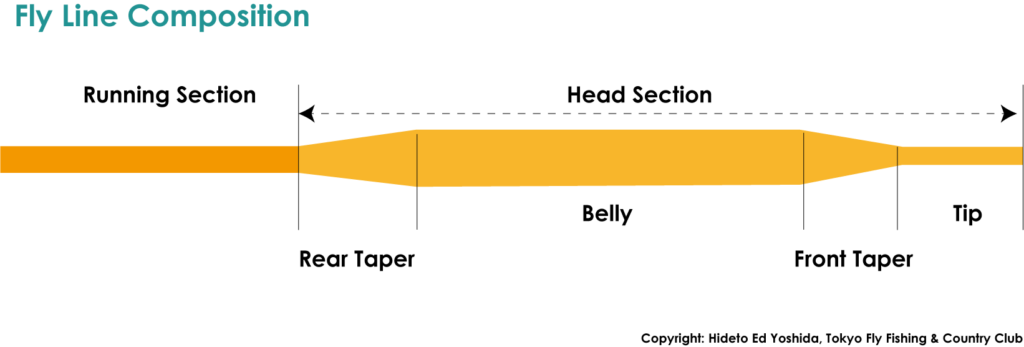

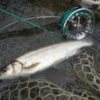

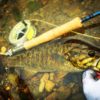
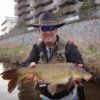

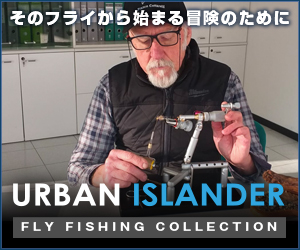
Discussion
New Pnigbacks & Trackbacks
[…] to cast the head of fly line. That's it. All you … … Read the rest here: How to Select Fly Lines for Single/Two-handed Fly Rod? AFTMA … ← Roses: Battered but Beautiful « SwittersB & Fly Fishing Fly Fishing Knots, the […]